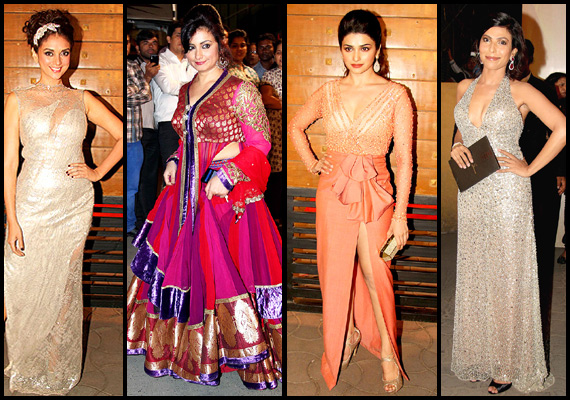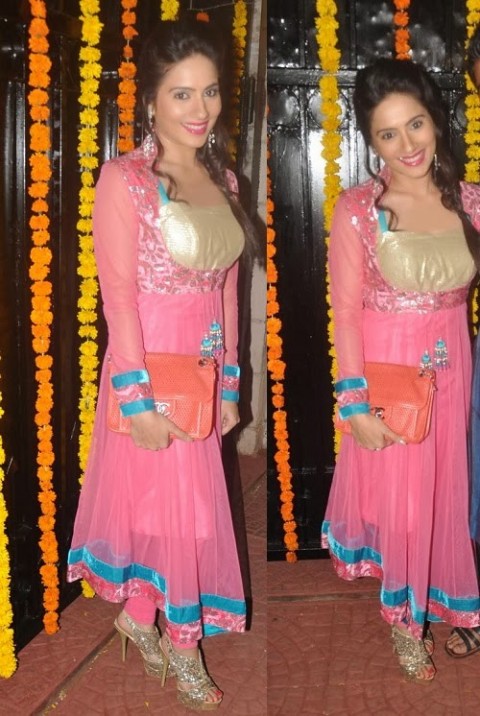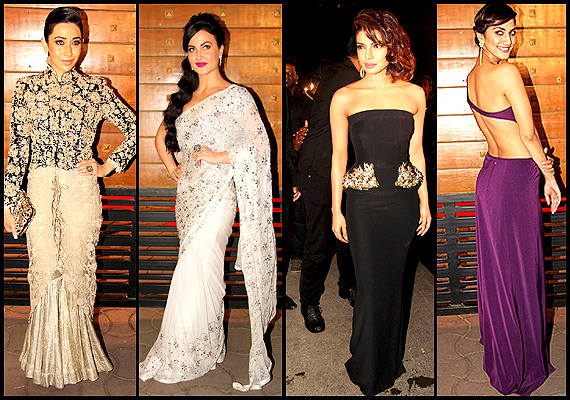Bollywood Punjabi Suits Biography
Source:- Google.com.pk
Bollywood is the platform which adds style & fashion to your personality. Bollywood salwar kameez have become the style icon for every woman who believes in good dressing taste according to latest fashion trends. G3fashions.in is well known as the best place to shop online for salwar kameez for women that redefine the meaning of beauty with its delightful online collection.
Who can ever forget the legendary historical character Anarkali? This court dancer of the Mughal emperor Akbar and the love of his famous son Salim used to perform her dances in a typical dress that resembled plain umbrella patterned skirts at the bottom and an embellished choli or blouse at the top.
his ethnic wear was made most popular, perhaps by our yesteryear bollywood actress Madhubala who herself performed the role of Anarkali in the film ‘Mughal-e-Azam’. Further, this type of salwar kamez, that became popular as Anarkali salwar suits were worn by such Bollywood stars as Meena Kumari in ‘Pakeeza,’ Rekha in ‘Umrao Jaan,’ Aishwarya Rai Bacchan again in the remake of ‘Umrao Jaan’ and Madhuri Dixit in ‘Aaja Nachle.’ Therefore, these actresses should also be given equal credit for making Anarkali churidar suits as the latest suits design of India.
Pakistani salwar suits were initially introduced by the ancestor of Pakistanis but it has gained recognition in India as it provides subtle look to the wearer. You may get the hot looking Pakistani salwar suits in trendy styles. Latest salwar suits are now available with stones, moti, zari and sequins work. If you are looking for a beautifully designed dress for a wedding, you can purchase multi colored resham embroidered and boota work. Also, the latest hand embroidered Pakistani salwar suits are available in the market on different fabric of clothes like Banarsi, Katan, Silk, Georgette and Organza.
The popularity of salwar suits has reached the globe. Salwar suits are now available with the trendy looks and attractive designs. You can get a perfect blend of modernized and traditional wear to go perfectly with the body texture. Salwar suit is the dress which is very famous among the Pakistani women. Keeping in mind the generation gap and the changing taste of the potential buyer, the manufacturer have always come across with the new ideas.The cheap factor is directly proportional to the Fabric used to make salwar kameez, design of salwar kameez and work done on the salwar kameez. Mainly the fabric cost as per quality is a big component to define its cost. Like a high range salwar kameez may be on little less prize so the salwar kameez may be called cheap when compared with material used.
Similarly design may be beautiful and material of high range but prize may be little less when compared with the normal prize of salwar kameez of the same fabric.
Other factor is work done on the fabric. The fabric may be of high range, design, curve and cuts are good but the quality of work done on it may not be good. Simply the work quality is cheap. If Cheap is with best workmanship then it means complete with cheap and best salwar kameez. It shows that salwar kameez is good in all respect of quality, price, design and comfort.
Indian clothing throughout history varies widely by region, culture, religion and climate. Saris and the salwar kameez--a unisex outfit consisting of loose trousers and a tunic--are traditional attire for Indian women. Indian men traditionally wear the lungi, dhoti or kurta. While European styles frequently appear in large Indian cities like Mumbai, many Indians hold to traditional clothes.
Other People Are Reading
Types of Indian Clothes How to Make Authentic Indian Clothing
History and Politics
Traditional Indian attire took on political significance during India's struggle for independence from British rule during the first half of the 20th century. Mohandas Gandhi famously wore the traditional Indian dhoti and shawl. The dhoti is rectangular strip of cloth about 7 yards long. Men wear the dhoti wrapped and knotted around their legs and waists.
Gandhi hand spun the yarn for the fabrics he wore. In India, Gandhi's choice of attire became politically meaningful because it spoke to the movement to reject British goods and support Indian products and traditions.
Sari The sari, sometimes spelled "saree," is a long strip of unstitched cloth that women drape over the body in several different ways. In the late 20th century, the most common way to wear the sari is to wrap it around the waist and drape it over the shoulder. Women wear the sari over a petticoat and a fitted short-sleeved blouse called a "choli" or "ravika."Sponsored Links Facebook® Account Sign Up
World's Largest Online Community. Join for Free & Enjoy the Benefits!
The Sari in History
Historians trace mentions of the draped fabric clothing as far back as the Indus Valley Civilization (2800 to 1800 B.C.), where archaeologists uncovered a statue of a priest wearing a wrapped cloth. Though without precise dates, most historians agree that saris developed simultaneously in North and South India, and that women have worn the sari in its current form for hundreds of years.
In the late 19th and 20th century the sari became a symbol of the Indian nation. Several famous artists like Ravi Varma and Abanindranath Tagore made paintings featuring several women dressed in the regional variations of the sari to symbolize the diversity and unity of the Indian people.
DhotiThe Indian western states of Rajasthan, Gujarat and Maharashtra have a large number of men who continue to wear the dhoti. There are many regional variations in how men wear the dhoti across India. In Gujarat, for example, men wear the dhoti with a short kurta on top, called a "kediya" (a kurta is a loose tunic buttoned halfway down the front).
The dhoti is also subject to several rules of etiquette. In the southern part of India, men sometimes pull up the dhoti and fold the top around the waist--the dhoti then ends slightly under the knees. However, many believe that talking to women with the dhoti worn in this shorter manner is indecent and disrespectful.The Dhoti in History Like the sari, Indian have worn the dhoti and styles similar to the dhoti for several centuries. Several dhoti styles appear in the Amaravati sculptures made during the Satavahana dynasty of south India (2nd to 3rd century B.C.). Many of the dhotis carved in the Amaravati sculptures also have kamarbands, a wide wrapped waistband whose name is the source of the Western cummerbund.
Bollywood Punjabi Suits Punjabi Suits Neck Design 2014 Party Wear New Fasion Designs 3d Images Design By Ritu Beri Facebook For Women

Bollywood Punjabi Suits Punjabi Suits Neck Design 2014 Party Wear New Fasion Designs 3d Images Design By Ritu Beri Facebook For Women

Bollywood Punjabi Suits Punjabi Suits Neck Design 2014 Party Wear New Fasion Designs 3d Images Design By Ritu Beri Facebook For Women

Bollywood Punjabi Suits Punjabi Suits Neck Design 2014 Party Wear New Fasion Designs 3d Images Design By Ritu Beri Facebook For Women

Bollywood Punjabi Suits Punjabi Suits Neck Design 2014 Party Wear New Fasion Designs 3d Images Design By Ritu Beri Facebook For Women

Bollywood Punjabi Suits Punjabi Suits Neck Design 2014 Party Wear New Fasion Designs 3d Images Design By Ritu Beri Facebook For Women

Bollywood Punjabi Suits Punjabi Suits Neck Design 2014 Party Wear New Fasion Designs 3d Images Design By Ritu Beri Facebook For Women

Bollywood Punjabi Suits Punjabi Suits Neck Design 2014 Party Wear New Fasion Designs 3d Images Design By Ritu Beri Facebook For Women

Bollywood Punjabi Suits Punjabi Suits Neck Design 2014 Party Wear New Fasion Designs 3d Images Design By Ritu Beri Facebook For Women

Bollywood Punjabi Suits Punjabi Suits Neck Design 2014 Party Wear New Fasion Designs 3d Images Design By Ritu Beri Facebook For Women

No comments:
Post a Comment